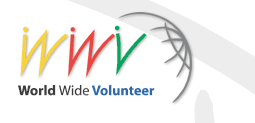Report (Part 6): Sustainable Development Convention 200231 October 2002 © ICVolunteers and IBEX, Geneva, Switzerland Contents
FAIR TRADE: Trade for FarmersTime: 31 October 2002, 13:30 Location: Salle B Chair: Muhungi Kanyoro, Ecumenical Church Loan Fund (ECLOF) Presenters/ Participants: Larry Millan, Ecumenical Church Loan Fund (ECLOF) The workshop began by outlining an interesting scheme run by the Ecumenical Church Loan Fund (ECLOF) involving the giving of loans to help poor rural farmers 300km's north of Manila in order to become self sufficient. It quickly turned to the issue of microfinance as an investment tool for commercial organizations and how this would be a good opportunity to invest. Muhungi Kanyoro representing Ecumenical Church Loan Fund (ECLOF) before introducing the panelists began by highlighting the obscene disparity between the rich and the poor. Following the introduction Larry Milan (ECLOF) gave an overview of the Philippines where he works. The Philippines has 7100 Islands and a population of 80 million, of which 85% are below living standards, although there is a 90% literacy rate. He went on to describe the kind of work the ECLOF does by giving an example of a vegetable-farming loan. 300km north of Manila is an area that produces 80% of the vegetable requirements for the population of Manila, which is about 10 million. The ECLOF allows farmers to borrow inputs for the farm such as seeds and equipment, the loan being payable upon harvest with some interest, which is one of the lowest rates available at 2% (other creditors offer between 4%-6%). With the interest rate being so low means it is affordable and facilitates the ease of return payment due to payment after the harvest not each month regardless of harvest. Another advantage is that the loan offers protection against crop loss. The main objective of the farmers is to sell their produces directly to retailers in the metro Manila area giving higher returns on investment and more control over pricing. Some of the add-ons of the project are that equipment can leased, a farmer's assembly is formed and training is given on the best farming practices. Although the majority of the issues are positive there are some problems, in that there is a lack of capital and fair trade farmers are at the mercy of big traders who can force the price down to buy and up to sell. Larry Milan ended by saying that although there are still problems, the ECLOF does make a difference by giving opportunities to farmers they would otherwise not have. The next presenter Cedric Lombard from Blue Orchid Finance SA, defined micro finance as the provision of financial services (credit, savings, insurance, payments) to the entrepreneurial poor, it is only one segment of finance. He went on to say that there is a change in the conception of the north- south relationship and it is becoming more of a two system. He ended by pointing out the long-term social benefits as being 1) gives empowerment through financial assistance and 2) provides education. Guillaume Taylor from De Pury Pictet Turrenttini & Co. Ltd looked at microfinance as an investment tool and looked at microfinance under four headings: 1. Sustainability 2. Profitability 3. Growth 4. Regulation & Transparency. He pointed out that we are at the beginning of the growth end of microfinance and it is an effective investment tool, in which the industry as a whole does meet the criteria of investors. The financial advantages of microfinance investment being;
The commercial investment opportunities being;
He concluded that microfinance was viable as an investment and it is the purest form of investment related to sustainable financing and development. Surprising Issues
Interesting Questions Conclusions Posted: 2002-10-31 Updated: 2010-1-05 | ||








